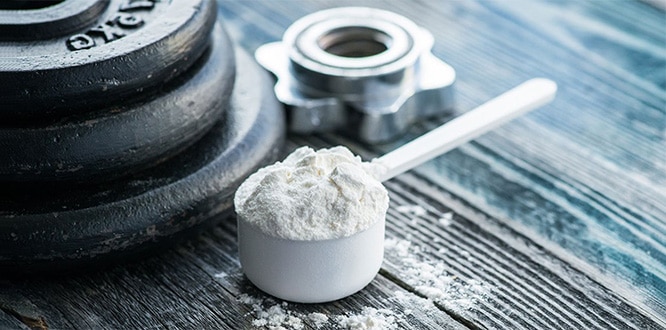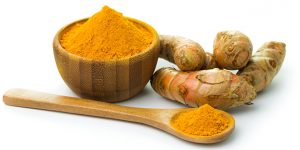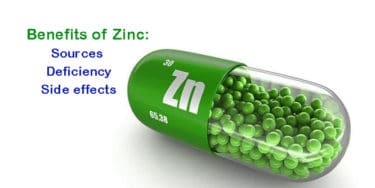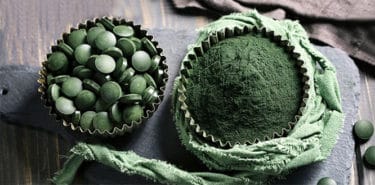Creatine is an organic acid that helps provide energy to the cells in the body, especially in muscles. It can either be produced synthetically, or it is naturally found in red meat and fish. It is used to increase performance and muscle mass in athletes and the elderly. It helps muscles produce energy during weightlifting and high-intensity exercise. It is also beneficial in the treatments of diseases such as brain disorders, heart failure, fibromyalgia, depression, schizophrenia, Parkinson’s disease, muscle and neurological disorders, skin aging, and multiple sclerosis (MS). Creatinine overdose may cause diarrhea and nausea. It is likely to cause side effects in those with kidney problems.
Table of Contents
What is Creatine?
Creatine is a compound found naturally in our bodies. It is also a nutritional supplement used to increase muscle mass, energy production and athletic performance in athletes. It is synthesized from arginine, methionine amino acids and glycine in liver, pancreas and kidneys. It increases production of adenosine triphosphate which is energy source required for cellular functions.
It helps macronutrients (carbohydrates, fats, proteins) be converted into ATP and used by tissues with high energy needs. It also protects against neurological diseases and is used to treat disorders occurred when the body cannot metabolize the creatine. (1)
Characteristics of Creatine
- Meat consumption, exercise, amount of muscle and testosterone affect creatine store.
- Almost 95% of it is stored in muscles in phosphocreatine form, %5 of it is found in the brain, kidneys, liver and heart as free creatine.
- Cardioprotective characteristics may help protect the heart and blood vessels.
- It is a performance enhancer and sarcopoietic.
- It has a pseudovitamine effect (not a vitamin or mineral but acting similarly).
- It affects cognitive function.
- It is knowns as nitrogen which is not chemically a protein.
- Creatine in nutrients is digested more slowly than supplements.
- It may disappear when foods are cooked.
Role of Creatine
It plays a vital role in transporting and storing cellular energy. It stores high-energy phosphate groups in the form of phosphocreatine and converts it into ATP, which is the main energy source. It increases the body’s ATP production capacity; therefore, it produces energy quickly during intense exercise.
It also helps preserve strength and performance. Forming fat-free muscle mass, reducing fatigue, improving mood and increasing bone density are among the benefits of creatine.
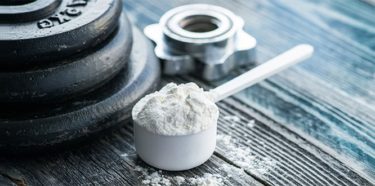
Creatine usage
The liver produces 2 grams of creatine every day. We need 1-3 grams of creatine daily. We get almost half of our need from foods and the rest is synthesized by the body. Supplements are safe provided that they are taken maximum 25 grams/d up to 14 days or at lower doses of 4-5 gram/d up to 18 months. Studies show no side effects of use up to 5 years but further research is needed on longer use. (2)
How is creatine used?
Many athletes and bodybuilders follow a loading protocol. They start to take high doses to increase body storages quickly and continue with long-term maintenance doses to preserve high level of creatine.
Skeletal muscle can keep a certain amount of creatine, taking more than the capacity does not increase the level. Saturation point is reached in the following few days of the loading dose. Doses should be spread over the day to prevent side effects and should also be taken with plenty of water. When taken with foods containing carbohydrates and protein, absorption is easier.
- For age-related loss of muscle and athletic performance, the loading dose is 20 grams for 4-7 days. Following this period, maintenance doses are usually 2-10 grams per day.
- For muscle strength, the loading dose is around 20 grams for 5-7 days. Then, maintenance doses ranging from 1 to 25 grams are taken.
Who should use creatine?
- Vegetarians who can’t get enough creatine from their diet,
- The elderly
- Those under the risk of a neurological disease
- Sportsmen like athletes, weightlifters and bodybuilders who need speed or muscle burst in a short period can use creatine supplements.
According to the International Society of Sports Nutrition (ISSN), athletes exercising intensely may need to consume 5-10 grams to maintain their creatine stores. Studies on use in children and young people are limited. It can be a nutritional alternative for young athletes along with appropriate precautions and approval of a doctor. (3)
Who should not take creatine?
- Those who have renal disorders or risk of kidney disease and with diabetes are recommended not to use it.
- There are concerns that it may increase mania in those with bipolar disorder.
- Safety of use during pregnancy and breastfeeding is not approved.
- As it may lead to weight gain, it may negatively affect athletes aiming certain weight categories.
Benefits of Creatine
Improves athletic performance
It contributes to the production of more energy in the body and improves endurance in high-intensity interval trainings (HIIT). It is beneficial for sportsmen like sprinters and weightlifters who need short bursts of energy.
Increases muscle mass
It reduces age-related loss of muscle, helps maintain muscle mass, increases muscle strength. It helps you gain muscle as follows: (4)
- It increases cellular signaling which helps muscle repair and development.
- It helps protein synthesis which increases the growth of fat-free muscle mass.
- It renews ATP stores rapidly and prevents fatigue during intense exercise.
- It increases hormones.
- It increases the level of water in muscle cells.
- It reduces high levels of myostatin, which prevents new muscle development.
Repairs damage after an injury
After intense endurance training, it reduces muscle cramps thanks to antioxidant effect, speeds up recovery process in brain and other injuries.
Helps treatment of diseases that cause creatine deficiency
Some disease may cause creatine deficiency. Studies show that creatine supplement may alleviate symptoms of these diseases. Diseases that can cause deficiency:
- Chronic obstructive pulmonary disease (COPD)
- Congestive heart failure
- Diabetes
- Multiple sclerosis (MS)
- Fibromyalgia
- Osteoarthritis
- Loss of vision
- Muscle diseases such as muscular dystrophy, muscular atrophy and polymyositis
Alleviates depression symptoms
Studies show that it increases antidepressant effect in women experiencing major depression and that it can be a therapeutic approach in cases of comorbid methamphetamine addiction. (5)
Prevents skin aging
Studies indicate that creams containing creatine-folic acid treat sun damage and reduce sags and wrinkles. (6)
Maintains brain functions
It supports cognitive development such as memory, concentration, attention and increases cognitive performance. It improves brain health and prevents neurological diseases by increasing phosphocreatine stores in the brain. Diseases which creatine has effect in the treatment are as follows:
- Alzheimer’s disease
- Parkinson’s disease
- Huntington’s disease
- Ischemic stroke
- Epilepsy
- Brain or spinal cord injuries
- Head injury
- Rett syndrome (nervous system disorder)
- Amyotrophic lateral sclerosis (ALS)
- Genetic diseases affecting sensation and movement
Types of Creatine
There are many types of creatine on the market. Some of these formulations and combinations are creatine phosphate, creatine nitrate, creatine ethyl ester, creatine+sodiumcarbonate, creatine magnesium+chelate, creatine+glycerin, creatine+glutamin and inulin+effervescent. There is yet no reliable study on those including formulations yet.
What is the best creatine type?
Monohydrate is the best investigated, digestible, cheap and effective form of creatine. It is available in various forms such as powder, capsule, gel, sugar, gum. It is a common ingredient of sports drinks.
Creatine Kinase Test
In case of inflammations in muscles, sports injuries or findings about heart attack, a creatine kinase (CK) test is performed. Its level in the blood starts to increase in the first 4-6 hours after a heart attack; it reaches the highest level in 18-24 hours and decreases to normal level in 2-3 days.
When CK level, which is found in different organs and tissues such as skeletal muscle, heart and brain, increases in the blood, values in the form which it takes based on tissue are evaluated to find out the causes.
CK-MM is found in the skeletal muscle CK-MB in the heart muscle, and CK-BB mostly in the brain and the least in the smooth muscles such as intestines and uterus.
Creatine Kinase
Creatine is also known as phosphokinase. It is an enzyme that can be produced by various tissues and cells, and provides energy to the body. It speeds up creatine conversion to form phosphokinase that uses ATP energy.
Serum Creatinine Level in the Blood
Creatine kinase (CK) catalyzes the conversion of creatinine. The CK value is expected to be 52-336 units (U/L) in adult males and 38-176 units (U/L) in adult females. However, these values may vary depending on person, laboratory where the test is done, applied method and device.
What is a dangerous level of creatine kinase?
If the ratio of CK-MB to total CK (relative index) is higher than 2,5-3, occurrence of a heart muscle damage is considered; if there is a lower relative index than this value along with higher CK, occurrence of a skeletal muscle damage is considered. There may be an increase in myocardial infarction and myopathy rates up to 50 times.
Difference of creatinine, creatine and keratin
- Creatine is an amino acid that is naturally formed and provides energy support to the body; it is transferred to each and every tissue from the heart to brain. It is used as a dietary supplement by athletes or bodybuilders.
- Creatinine is a waste product forming after the breakdown of creatine and it is the resulting substance of daily muscle movements. It is filtered by the kidneys and excreted in urine. Its blood levels are indicators of kidney function.
- Keratin is a fibrous protein that forms structures such as nails, hair, skin and teeth and increases their durability.
Keratin shampoo
Keratin is a protein which protects from harmful rays of the sun. Keratin care is done to improve damaged hair and protect its health. As keratin shampoo is naturally formulated, it does not include any chemical. It prevents hair loss, nourishes hair by affecting the follicle, reduces greasiness, dandruff, itching and provides shine and moisture to hair.
Keratin oil
Keratin, which is naturally found in hair, gradually decreases as a result of constantly applied processes and products on hair. Keratin deficiency gradually occurring in hair causes hair loss at a young age. Keratin oil prepared with natural methods helps restore proteins that stressed hair needs.
As a restorative protein, it maintains natural moisture balance and helps hair be softer, silky, shiny and lively. It penetrates deep into hair and helps hair be easily structured.
Side effects of creatine
- Combination of creatine with caffeine and supplementary ephedra may increase the risk of stroke in athletes.
- Intake along with cyclosporine, aminoglycosides, non-steroidal anti-inflammatory drugs may increase the risk of kidney damage.
- If taken high doses, it can damage the liver, kidneys or heart.
- It has not approved by the Food and Drug Administration (FDA) yet; it may be safe in small amounts but its long-term safety has not been proven.
- It can cause restlessness when taken before sleep.
- Studies suggest that it may be less effective in children and adolescents than adults.
- Stomach cramps may be seen when taken without adequate water and muscle cramps, nausea, diarrhea, dizziness, stomachache, dehydration and fever may occur at higher doses.
- It may lead to weight gain.
Does creatine cause bloating?
Many people who use creatine gain weight; the reason is tgat muscles draw water from the rest of the body. This overweight is not muscle or fat mass, but regular use increases muscle mass.
Does creatine cause hair loss?
Although it is not scientifically proven, it is thought that it may increase hair loss in men who have genetically predisposed to hair loss. The reason is that the amount of DHT (dihydrotestosterone) increases in men taking creatine. DHT, associated with male pattern hair loss, occurs as a result of the conversion of testosterone. However, the increase in DHT level can also occur due to weight lifting, intense sports or food intake.

